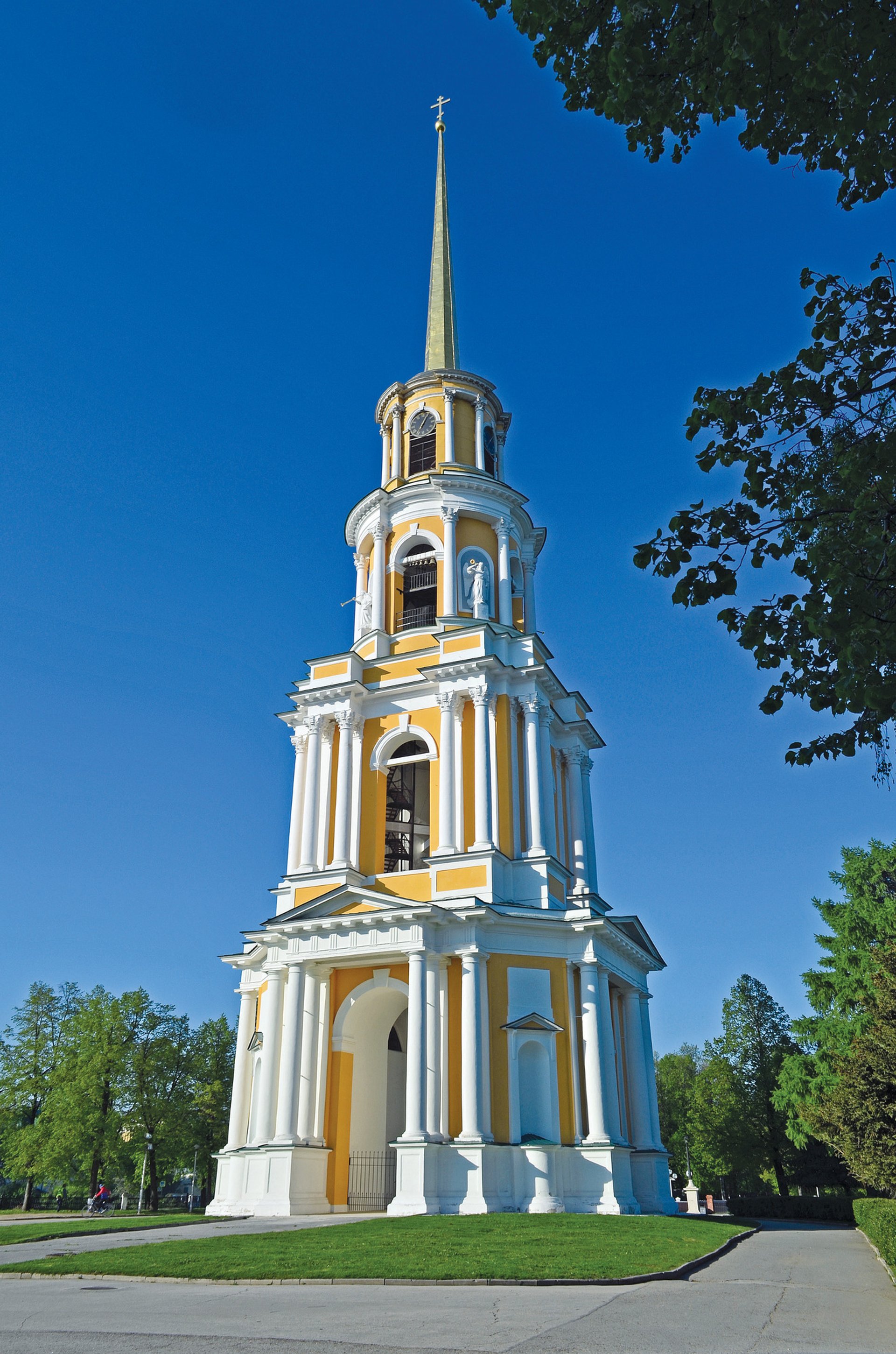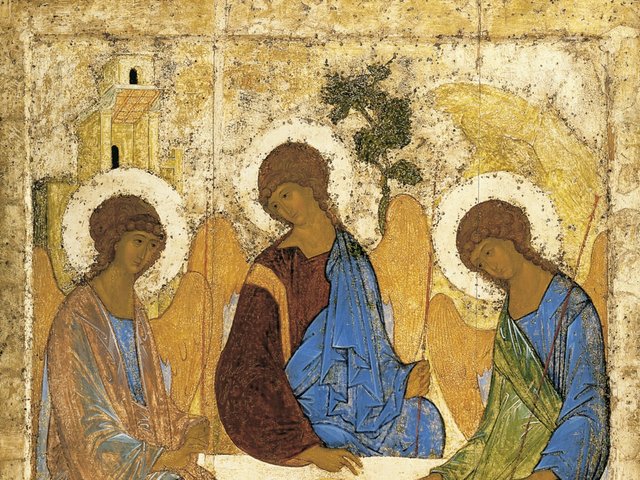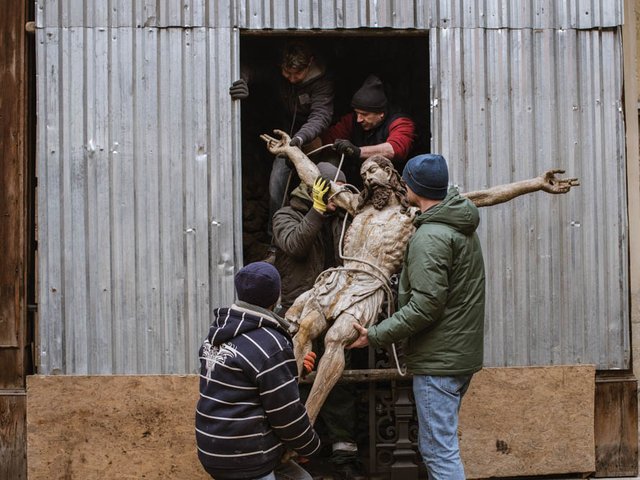Russia’s extensive celebrations in May to mark the 70th anniversary of its triumph over Nazi Germany confirmed that the victory has been elevated into a sacred event by both the Kremlin and the Russian Orthodox church.
It is a view reinforced by comments from the archpriest Aleksandr Ilyashenko, a well-known Moscow cleric, in a recent interview on the popular Russian Orthodox website, Pravmir. He said that Hitler “was the enemy of Christianity” and his desire to destroy religion was proven by the Nazis’ thefts from Soviet anti-religious museums, orchestrated by Martin Bormann, Hitler’s private secretary.
The museums of “scientific atheism” that the Nazis looted are the subject of much controversy in modern-day Russia. Created under Lenin and Stalin to enshrine the rejection of religion, with displays describing faith in God as backward and cruel, they were often situated in former churches and exhibited confiscated relics and religious treasures. Yet many Russian Orthodox believers today also remember that Stalin, after nearly destroying the church, legalised it under strict state control as part of his effort to rally Russians against the Nazis.
The largest of the museums, known as the Museum of the History of Religion and Atheism, was located in the Kazan Cathedral in Leningrad. The cathedral was originally built by Tsar Alexander I on Nevsky Prospekt, the former Russian imperial capital’s main thoroughfare, on the eve of the War of 1812. After the war it served both as a religious and military shrine to Russia’s victory over Napoleon.
Museum evicted In the 1990s, following the fall of communism, Leningrad became St Petersburg once again and the museum was forced out into cramped accommodation and rechristened the Museum of the History of Religion. Religious services resumed in the cathedral, which also hosts exhibitions and is regarded once again as a monument to military valour, along with many other churches across Russia that have been restored as cultural and historical monuments.
“We’re just trying to defend ourselves, at least to defend our Lord Christ”
Also in May, Patriarch Kirill I, the head of the Russian Orthodox church, consecrated a rebuilt church that had been destroyed in 1964 under the Soviet leader Nikita Khrushchev’s anti-religious campaign. He described the recreation of the church of the recently reformed Preobrazhensky regiment (honour guard of the Russian armed forces and once the personal bodyguard of Catherine the Great) as “an event of very great historical scale, of huge symbolic significance”. He also tied it to “our people’s victory in the great patriotic war” over Hitler and said the church has been restored “for the glory of Russia’s warriors, for the glory of our fatherland”.
Orthodoxy and scandal Nearly 25 years after the collapse of the Soviet Union, the Orthodox church remains entangled in a complex relationship with museums, as it does with post-Soviet culture as a whole. The church has played a central, symbolic role in events that have rocked Russia since 2012, not just the prosecution of Pussy Riot for its feminist “punk prayer” against Vladimir Putin and Patriarch Kirill, but also the annexation of Crimea and the war in eastern Ukraine. And it continues to find itself in the middle of scandal relating to the arts, most recently in March, when the diocese of Novosibirsk led a campaign to prosecute the creators of a modern interpretation of Wagner’s opera Tannhäuser and its poster featuring a crucifix between the legs of a naked woman. It led to Boris Mezdrich, the director of the city’s respected opera and ballet theatre, being fired by the federal culture ministry, led by Vladimir Medinsky.
Church intellectuals are divided on this issue: some say the church’s position is extreme, while others want the church to crack down harder on artistic license. Andrei Kuraev, a deacon in the church, has defended Pussy Riot and criticised both Patriarch Kirill and Putin. He says both sides are to blame, and that although many clergymen disagree with the idea of prosecuting artists, “the reaction of the church is just part of the problem, a problem that was not created by the church”.
Other church officials say that religion is under attack by an immoral, secular world. “The church and what is sacred were attacked, we didn’t attack anyone. We’re just trying to defend ourselves, at least to defend our Lord Christ,” says archpriest Leonid Kalinin, a member of the Patriarchal Council on Culture. The Council said in a statement that while bureaucrats should not interfere in the creative process, artists are obliged to observe certain norms and state funds should not be spent on offensive productions such as Timofei Kulyabin’s staging of Tannhäuser. “Muslims told me on this subject that they would have done with him [Kulyabin] what was done in France,” says Kalinin, referring to the attack by Islamist gunmen on the offices of satirical magazine Charlie Hebdo. “It’s just that Orthodoxy is a very kind religion.”

Kalinin, who trained as a sculptor, was appointed this year as custodian of the church antiquities of the Moscow diocese. A similar post has been created in several central dioceses with ancient churches, monasteries and icons. “In the early 1990s there were conflicts with the museum community,” he told The Art Newspaper. “Many museum workers were communists and against the church, but now, with time, this division has become less pronounced. There is more understanding on the part of the museum community towards the church and the significance of these sacred sites, and on the part of the church towards the museum community.”

However, as museums continue to be moved out of the ecclesiastical buildings they have occupied since the Soviet era to make way for the church, conflicts continue to arise. In May in Ryazan, a city around 120 miles south-east of Moscow, activists picketed against the hand over of the entire kremlin (fortified central building), including the Ryazan Kremlin museum, to the church. Among the protesters was Irina Kusova, a deputy director of the museum, who was demoted several years ago for her public protests over the decision. The director of the museum was fired in 2007 and replaced by a supporter of the handover. In an email to The Art Newspaper, Kusova described it as part of a pact between the government and the church.
“The authorities need the support of the church for their self preservation, and with this goal a law on church restitution was passed in 2011,” she said.
No to Islamic art and Halloween In Perm, in the shadow of the Ural mountains, the state art gallery has been waiting for years for new accommodation and has been made to feel increasingly uncomfortable in the cathedral building, now reclaimed by the church, that has been its home for decades. In 2014, the local diocese objected to an exhibition of Islamic calligraphy being held there and in November 2013 it forbade a late night event in the gallery since it, in their opinion, resembled Halloween.
As Leonid Kalinin showed The Art Newspaper around the church of St Kliment in Moscow, restored to splendour from near ruins, he claimed that “the Russian Orthodox church has suffered [at the hands of] the state more than any church in the world” and that the state is compensating “at least a tiny part of those horrific losses”.
Yet not everyone sees communism as a purely destructive force. In June, the controversial archpriest Vsevolod Chaplin defended Stalinism, saying that it was, in effect, an “Orthodox model” of rule with one flaw: atheism. Also in June, Bishop Augustine of Gorodets and Vetluga in the historic Nizhny Novgorod region called Stalin “a unique figure” who built up the Soviet state on biblical principles. Bishop Augustine is a member of the Izborsk Club, an organisation of fundamentalist public figures, which has been taking a powerful icon around Russia: it depicts the Virgin Mary with Stalin and Red Army commanders.



